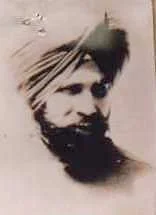June 4th 1984
The Thriving dominant khalsa
"At about 4 a.m. in the early hours of the morning of June 4, the regular Army attack started with a 25-pounder which fell in the ramparts of the Deori to the left of Akal Takht Sahib with such a thunder that for a few moments I thought that the whole complex had collapsed... Thereafter, every second the ferocity of firing increased” - Devinder Singh Duggal, who oversaw the Sikh Reference Library located inside Sri Darbar Sahib.
The desperate invading force retorts to firing mortar shells and poisonous gas canisters inside Sri Darbar Sahib and Sri Akal Takhat, targeting civilians to demoralise Sikh resistance and create chaos. The Khalsa Fauj maintain their positions and resolve, dominating the pitched battles between Indian forces who came willing to kill but unprepared for the unfavorable odds with which they gambled their own lives. Seven divisions of the Indian army were deployed and all the three wings of the Indian armed forces – Army, Navy and Air Force.
Under immense political pressure, suffering further casualties along with the growing threat from Sikhs across Punjab, the Indian forces utilise heavy artillery and request support of main battle tanks. While the Indian forces had 15,000 soldiers for the main assault, heavy weapons, complete provisions, and an additional 35,000 soldiers in reserve, the Khalsa Fauj, numbering less than 300, whose water supply had been cut off, were thriving off dried chickpeas and Gurus Kirpa.




